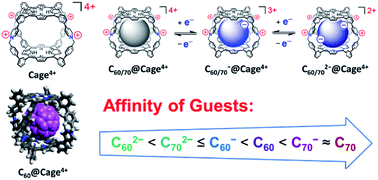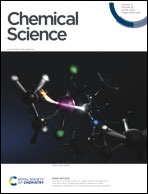Gram-scale synthesis of a covalent nanocage that preserves the redox properties of encapsulated fullerenes†
Abstract
Discrete nanocages provide a way to solubilize, separate, and tune the properties of fullerenes, but these 3D receptors cannot usually be synthesized easily from inexpensive starting materials, limiting their utility. Herein, we describe the first fullerene-binding nanocage (Cage4+) that can be made efficiently on a gram scale. Cage4+ was prepared in up to 57% yield by the formation of pyridinium linkages between complemantary porphyrin components that are themselves readily accessible. Cage4+ binds C60 and C70 with large association constants (>108 M−1), thereby solubilizing these fullerenes in polar solvents. Fullerene association and redox-properties were subsequently investigated across multiple charge states of the host-guest complexes. Remarkably, neutral and singly reduced fullerenes bind with similar strengths, leaving their 0/1− redox couples minimally perturbed and fully reversible, whereas other hosts substantially alter the redox properties of fullerenes. Thus, C60@Cage4+ and C70@Cage4+ may be useful as solubilized fullerene derivatives that preserve the inherent electron-accepting and electron-transfer capabilities of the fullerenes. Fulleride dianions were also found to bind strongly in Cage4+, while further reduction is centered on the host, leading to lowered association of the fulleride guest in the case of C602−.



 Please wait while we load your content...
Please wait while we load your content...